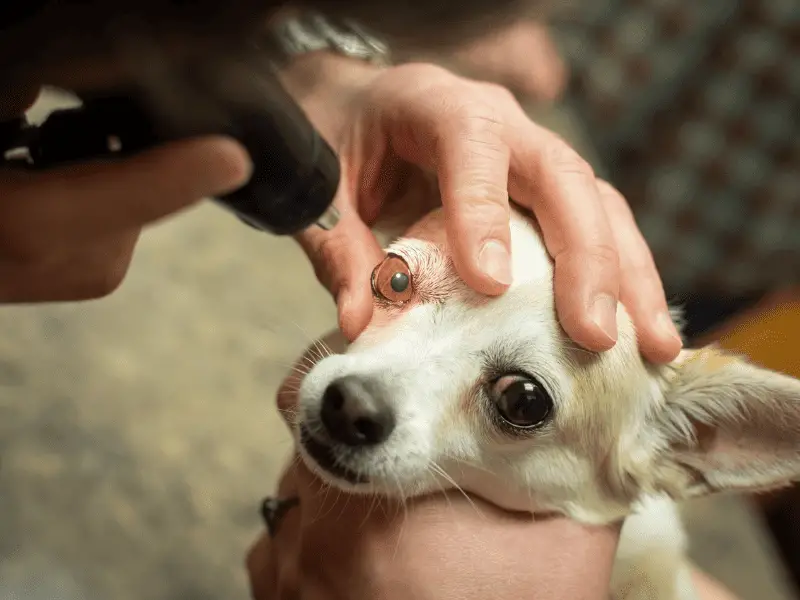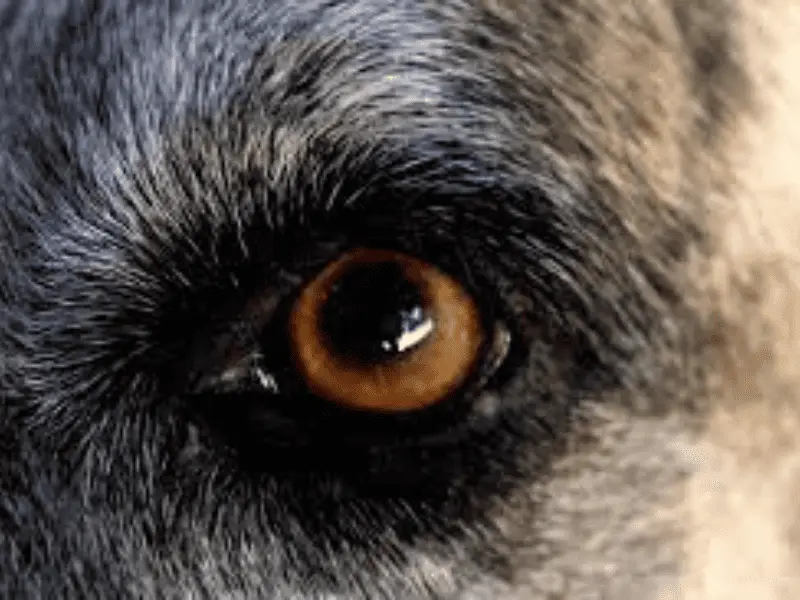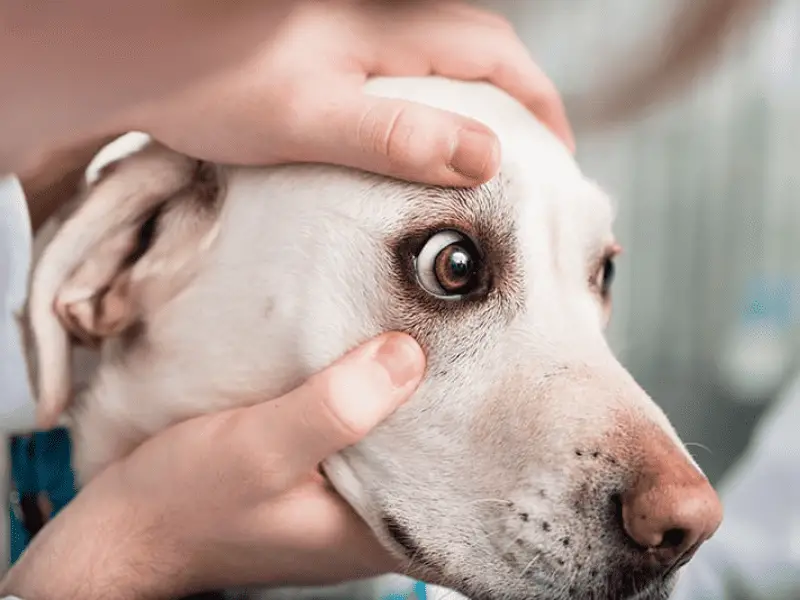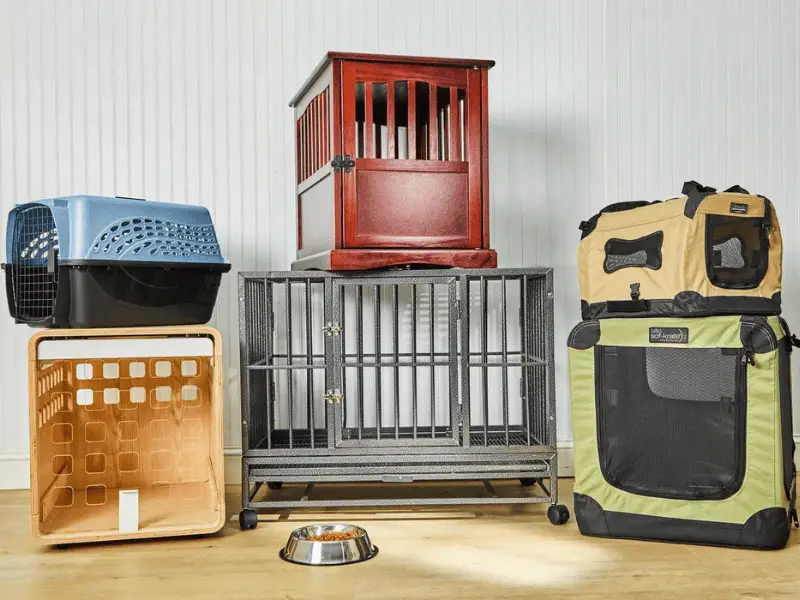My dog’s pupils are different sizes. Should I be concerned? Let’s learn about Anisocoria and the factors that can lead to this condition in dogs. Anisocoria, the condition where a dog’s pupils are of different sizes, can be concerning to pet owners.

Understanding the causes of anisocoria is crucial for identifying whether it requires immediate veterinary attention or if it is a harmless and common occurrence in certain breeds.
Definition and Explanation of Anisocoria
Anisocoria is a condition where a dog’s pupils have a noticeable size difference. This is due to the balance of muscles that dilate and constrict them being off. It can be caused by medications, trauma, nerve damage, or medical conditions.
It’s important to watch for signs like unequal pupil sizes, redness or swelling in the eyes, squinting, discharge, or changes in behavior. It’s crucial to get professional veterinary attention right away, as this could be a serious health issue.
Treatment options vary, and depend on the underlying cause. It could include medications, surgery, or other interventions. The prognosis depends on the severity of the condition, and how quickly it is addressed.
Dog owners should administer any medications prescribed by their vet, and follow up with any appointments or check-ups. Pet insurance can help with treatment costs. It’s also important to monitor the dog for resolution of the anisocoria, or for the development of additional symptoms.
To sum it up, anisocoria is a condition that requires prompt veterinary attention and proper treatment for the best possible outcome.
Various Factors Leading to Anisocoria in Dogs
Anisocoria in dogs can be caused by various factors, leading to unequal pupil size. To understand and treat the condition, we must consider these causes.
For example:
- Eye trauma – from scratches or punctures.
- Eye infections – bacterial or viral.
- Neurological disorders – like brain tumors or nerve damage.
- Medication side effects – some drugs can cause unequal pupil sizes.
- Glaucoma – increased pressure in the eye.
- Congenital abnormalities – some dogs may be born with it.
Treatment and management depend on the cause, and there may be other less common causes. Your vet can help with diagnosis and understanding the situation to pursue the best treatment options. Seek their help if you spot symptoms, as early treatment is key!
Symptoms and Diagnosis of Anisocoria
Anisocoria, the condition in which a dog’s pupils are different sizes, can be accompanied by various symptoms that may indicate underlying health issues. In this section, we will explore the notable symptoms of anisocoria in dogs and the diagnostic methods employed by veterinarians to accurately identify the cause. Stay tuned to gain valuable insights into understanding and potentially addressing this concerning condition in your furry companion.
Notable Symptoms of Anisocoria in Dogs
Anisocoria is a condition where dogs have unequal pupil sizes. It can be caused by a variety of things, and may show an underlying health problem. Symptoms to look for in dogs with anisocoria are:
- Pupils that are different sizes
- One pupil being bigger or smaller than the other
- No response to light in the affected eye
Pet owners should not ignore these signs, as they could be serious and need veterinary attention. Vets use tests to confirm anisocoria and find the cause.
It is important to remember that anisocoria is different from normal pupil size differences or changes due to light levels. Anisocoria is usually persistent and can point to issues like nerve damage, inflammation, trauma, infection, or tumors.
If left untreated, these problems can cause vision loss. That’s why pet owners should get veterinary help right away when they notice symptoms of anisocoria in their dog. That way, the vet can diagnose and treat the cause quickly.
Vets have lots of ways to diagnose anisocoria—more than a magician at a dog circus!
Diagnostic Methods Used by Veterinarians
Diagnostic methods are essential for veterinarians to accurately diagnose anisocoria in dogs. Techniques and tools are used to identify the cause and guide treatment.
First, the vet conducts a physical examination, focusing on the eyes and neurological system. They assess pupil size, eye movement, reflexes and eye health.

Slit lamp biomicroscopy and ophthalmoscopy are also used. These tests help detect abnormalities or signs of injury.
Tonometry and blood tests may be recommended to rule out systemic diseases.
MRI or CT scans can help detect neurological disorders.
These methods allow vets to gather information and make informed decisions about treatment.
If anisocoria is noticed, prompt veterinary attention is crucial. Delaying can cause further complications or worsening of symptoms.
For example, a dog owner noticed different-sized pupils and sought veterinary attention. Through physical examination and ophthalmic testing, the vet identified a traumatic injury as the cause. Treatment was successful and the dog recovered.
Diagnostic methods are key for timely identification and ensuring the best outcome. Like finding a needle in a pupil, tailored treatment can improve prognosis.
Treatment Options and Prognosis
When it comes to the treatment options and prognosis for dogs with different-sized pupils, tailoring the approach based on the underlying cause is crucial. Understanding the potential outcomes and the importance of immediate veterinary attention can make a significant difference in the overall prognosis.
So, let’s explore the various treatment options and delve into the significance of addressing this condition promptly for our furry friends.
Tailored Treatment Based on Underlying Cause
Tailoring treatment for anisocoria in dogs is important. Identifying the cause helps develop effective treatment plans. It allows vets to target the root cause and provide personalized care.
Examining the dog, tests and considering trauma, infection, or neurological disorders can help determine the best course of action. For example, if it’s caused by inflammation due to an infection, antibiotics may be prescribed. But more serious conditions may need surgery or radiation therapy.
Each case needs consideration and evaluation before treatment. Tailored treatment based on the cause helps dogs get the specific care they need. It increases chances of successful management and resolution of anisocoria.
Anisocoria can be a sign of various conditions that range in severity. It can have a simple or complex cause. So it’s important to consult a vet for diagnosis and determine if intervention or monitoring is necessary.
A study published in Veterinary Ophthalmology supports tailored treatment for anisocoria based on the cause. Targeted therapies result in improved prognosis and higher success rates. This is why pet owners should seek immediate vet attention if their dog has uneven pupil sizes.
Prognosis and Potential Outcomes
Anisocoria is a condition with unequal pupil size. The prognosis and potential outcomes for dogs with anisocoria depend on the underlying cause. Treatment that is tailored to the cause can change the prognosis. Immediate veterinary attention is essential to diagnose the condition and start the right treatment.
Potential causes, risk factors, and treatment options can result in various outcomes. Veterinary monitoring is also important to avoid a staring contest gone wrong with your dog’s eyes.
Importance of Immediate Veterinary Attention
Immediate veterinary attention is key for anisocoria in dogs. Anisocoria is a problem with unequal pupil size and can be due to health troubles that need quick diagnosis and treatment. Vets use physical exams and special tests to figure out the cause.
The main reason for fast vet attention is that diagnosis and treatment can be tailored to the underlying cause. It could be from injury, swelling, nerve damage, or medical issues. Timely vet care helps identify the actual problem accurately.

Another reason is that delaying care could lead to further damage or worsening of the symptoms. Depending on the cause, lack of vet help could mean more damage to the eye or getting worse. With fast help, vets can intervene and stop discomfort or complications.
In conclusion, fast vet attention is important for anisocoria in dogs. It allows diagnosis, treatment tailored to the cause, and better outcomes for pets. Early intervention stops further issues or worsening of symptoms. Owners should get professional help right away if they see signs of anisocoria for proper care and the best chance of recovery.
Home Care and Conclusion
When it comes to caring for your beloved canine with mismatched pupils, there are a few crucial aspects to consider. In this section, we will cover essential topics, such as administering prescribed medication as directed, the role of pet insurance in covering treatment costs, monitoring for resolution or additional symptoms, and finally, summarizing the key takeaways.
Let’s dive into home care and reach a well-informed conclusion regarding your dog’s health.
Administering Prescribed Medication as Directed
Administering prescribed medication as directed is essential for treating anisocoria in dogs. Caregivers must read and comprehend the vet’s instructions for dosage, frequency, and administration. It is important to stick to the designated times and intervals.
Depending on the type of medication, proper administration techniques must be followed. Even if symptoms improve, the full course of medication must be completed. It’s also important to monitor for side effects or adverse reactions.
Vets may provide additional instructions for each individual case, so communication should remain open. By following all guidelines and recommendations, caregivers can ensure successful treatment outcomes and optimize their pup’s health. And don’t forget: pet insurance is a great way to help pay the vet bill!
The Role of Pet Insurance in Covering Treatment Costs
Pet insurance can be a great help when it comes to anisocoria in dogs. It can cover the costs of consultations and diagnostic tests. Plus, depending on the policy, it may cover medications and surgeries too.
Having pet insurance can make owners more proactive in seeking veterinary attention. It can also help with ongoing costs and give peace of mind.
It is important to look closely at policies to understand what is covered. Some policies also offer extra features like routine wellness care or preventive measures.
Sarah knows this very well! Her pet insurance policy saved her from worrying about the financial burden when her dog got anisocoria. It allowed her to focus on giving her pup the best care possible.
So, keep an eye out for any changes in your pet. Anisocoria can quickly turn things pupillary to hairy!
Monitoring for Resolution or Additional Symptoms
Keeping an eye on resolution or extra symptoms is a vital part of managing anisocoria in dogs. After the underlying cause has been identified and a treatment plan is initiated, it is essential to watch the pup closely for any changes or developments.
By monitoring the dog’s response to treatment and noting any new symptoms that appear, vets can check the efficacy of the treatment and make adjustments when needed.

Checking in regularly allows vets to track the pup’s progress and determine if more intervention is necessary. It also helps to spot any potential complications or side effects of the prescribed treatment.
For instance, if a pooch with anisocoria shows no progress after a while or develops new symptoms like red eyes or discharge, it could mean reevaluation and alteration of the treatment plan is needed.
Furthermore, through continuous monitoring, pet owners can take part in their dog’s care by spotting any changes in behavior or looks that may signal a worsening or improving condition.
This data can be crucial to vets during follow-up visits, since it offers more understanding into the dog’s response to treatment and aids in making wiser decisions.
Summary and Key Takeaways
Text: Anisocoria in dogs? It’s when their pupils are of different sizes! Causes can vary. If you notice this condition, it’s vital to get veterinary help ASAP. Treatment is tailored to the underlying cause. Medication and monitoring for resolution must be done. Pet insurance may also help with costs. Don’t ignore anisocoria – get prompt veterinary attention!
Some Facts About “My Dog’s Pupils are Different Sizes: Should I Worry?”:
- Anisocoria is a condition in which a dog’s pupils are unequal in size.
- Anisocoria can be caused by various factors such as inflammation, increased pressure in the eye, diseases in the iris tissue, medication, or cancer.
- Symptoms of anisocoria in dogs may include one visibly smaller pupil, reddened scleras, clouding or blue-tinted cornea, eye discharge, droopy eyelid, squinting eye, or rubbing/pawing at the affected eye.
- Veterinarians diagnose anisocoria in dogs through tests such as Schirmer tear test, fluorescein stain, and intraocular pressure test. More specialized tests may be performed if needed.
- Treatment for anisocoria depends on the underlying cause and may involve removal of the source of exposure, medication, or long-term management. Regular eye health check-ups are recommended.



Leave a Reply